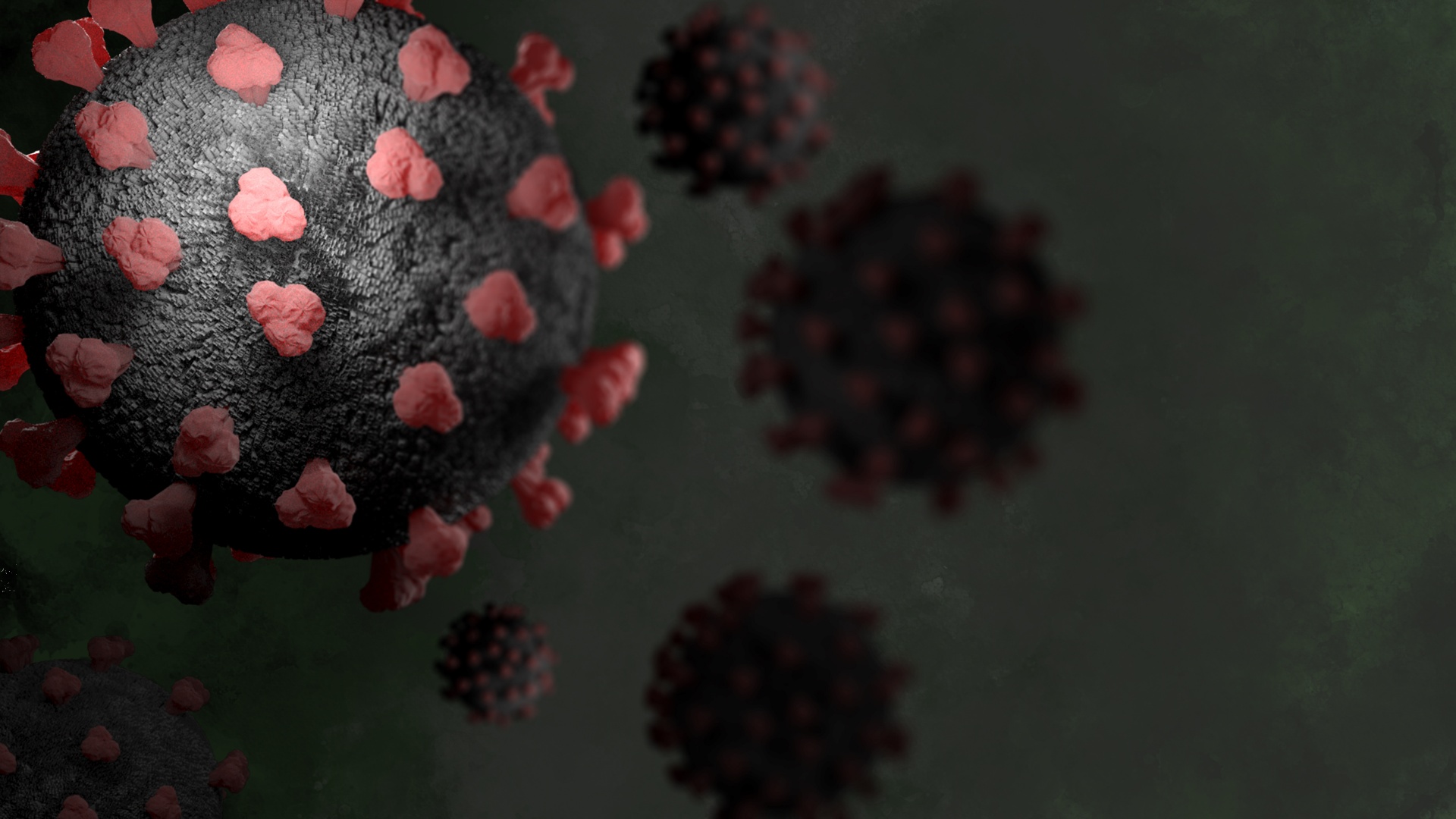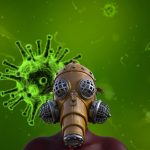We asked four Australian researchers a few questions about this latest coronavirus that have been bugging us. Here's what they had to say
The Medical Republic asked four Australian researchers a few questions about this latest coronavirus that have been bugging us. We spoke to: Professor Stuart Tangye, immunologist at the Garvan Institute, Sydney; Dr Sacha Stelzer-Braid, virologist at the Virology Research Lab, UNSW; Professor Roy Hall, virologist at the University of Queensland; and Professor David Isaacs, paediatric infectious diseases physician at the Children’s Hospital at Westmead. Here’s what they had to say:
What do we know about the origins of the virus and how similar is it to the first SARS?
SSB: It’s about 88% similar to a virus that’s found in bats, so that’s its most likely origin, but it probably came through another host on the way to humans. We just don’t know.
This virus doesn’t come directly from SARS, but it is in the same branch of the phylogenetic tree. They are quite similar. The original SARS didn’t transmit from human to human as efficiently as this virus, and I’ve seen some evidence that the binding of this SARS-CoV-2 virus to the ACE2 receptors in our lungs cells is 10 times stronger – that’s probably helping it to transmit and establish an infection more successfully than the first one.
Will we be immune after recovering from infection with SARS-CoV-2, and how long is that immunity likely to last? What about immunity from a vaccine?
ST: Generally speaking, viruses are very good at inducing immunity. It’s a bit early to have a good understanding of the type of immune response that is being generated, how strong it is. There are stories in the news of people being reinfected, but the time period is pretty short – so whether the virus was actually cleared in the first place or detected appropriately, that’s the caveat.
RH: That would be a guess. I would suggest it would be long-lived, if it’s a natural infection we’re talking about.
Vaccine-induced protection, particularly if it’s not a live vaccine, is likely not to be as long-lived. Generally with a natural infection, you get a lot more viral antigens produced in the body and there’s a much stronger stimulus for the immune response to generate those antibodies.
We would hope that one vaccination would work, but it’s likely that it would take more than one [like hepatitis B].
What’s going on with the age profile? Isn’t it unusual for severity and mortality go up with every age bracket?
DI: I’m not sure anybody knows. The evidence suggests that children do get infected but tend not to get as much in the way of symptoms. Babies seem to be getting colonised but there are virtually no descriptions of a newborn getting overwhelming infection – almost all have been asymptomatic or had other symptoms that were probably due to being preterm. They may have got antibodies from their mothers coming across the placenta.
Then there’s untrammelled viral replication in the elderly who can’t respond as well immunologically.
This was also there in SARS, which is a cousin of this virus. The children were relatively protected.
As for transmission, there are no clear cases where a child has given it to an adult, whereas we know plenty of intrafamilial spread from parents to the children.
ST: It is striking, because typically the populations at most risk are the elderly, the young and pregnant women. But this disease, it’s really an older person’s condition.
We’re seeing a lot of virus-positive kids, even teenagers, but the level of disease in those individuals is almost negligible. Everyone under 50 is travelling pretty well. And we don’t know why – there must be host factors but what they are, it’s not clear.
Obviously with the older population there have been well identified pre-existing conditions – diabetes, heart disease, lung disease, kidney disease – they wouldn’t help with a viral infection.
I don’t want to say there’s no other virus like this. But usually you get a U-shaped curve. So this does seem very new, very telling and very characteristic of this epidemic. It is unusual, that’s for sure.
There is this thing called immune ageing, which just happens normally, irrespective of pre-existing conditions. But why it’s so marked with this condition, we don’t know.
Another thing about the older population is obviously they’ve been around for longer. So there’s this idea that they have been exposed to more coronaviruses and have some antibodies that cross-react with SARS-CoV-2, and those antibodies may not be helpful – they may be actually contributing to the ability of the virus to infect more cells, and that can then just result in a lot more viral replication and viral load. That’s a phenomenon called antibody-dependent enhancement.
That’s one hypothesis. It’s not something you can pick up in a routine lab test.
But it is a risk of vaccines that they generate this type of antibody. There are examples of vaccines that have actually promoted infection.
SSB: That’s one of the really big questions for me. I can’t explain why children are not having a more severe infection because normally, and I’m thinking with all other respiratory viruses that I study, it’ll be very young children and elderly people who are the at-risk groups.
At the same time some youngish, healthy people are getting very sick and even dying. What’s happening there?
DI: If you get this sort of pattern, where children aren’t infected or aren’t affected very much, and yet young adults sometimes get very sick, it may be an immunological dysregulation, a cytokine storm.
So it’s partly virus and partly host immune response, and that may be a bit dependent on the host genetic makeup.
ST: While a lot of symptoms are obviously due to infection, some of them, like fever, are caused by the immune system. To kill off a virus, you have to kill off your own infected cells, which can result in tissue damage.
Interleukin-6, a pro-inflammatory cytokine, has been detected at increased levels in patients with severe disease. We already have a biological drug, tocilizumab, that blocks IL-6. So people with COVID-19 have been treated with tocilizumab and that’s dialled down this hyper-inflammatory response.
[Another immune-suppressing drug, Janus kinase-inhibitor ruxolitinib, is going into trials in COVID-19 patients with cytokine storm.]
SSB: It seems SARS-CoV-2 can cause a sort of heightened inflammatory response in some patients, the cytokine storm, which we see with influenza as well. That causes this liquid buildup on the lungs, and that’s where the acute respiratory distress comes from.
Are there any other viruses with a similar age profile?
RH: In Ross River and dengue it’s a prepubescent thing: young children don’t get severe disease at all, but older children do. In this instance, it seems that most young people under 40 or 50 experienced a much less severe form of the disease, newborn babies as well.
DI: There is chicken pox, and a classic one is hepatitis A. So if you’re one and you catch hepatitis A, it gives you a bit of gastro and nothing else. As you get older, you get a bigger response to the virus in your liver and you go yellow and get a swollen, painful liver and you’re quite sick with it for weeks. That’s an example of your lymphocytes attacking the virus, but attacking your own liver as collateral damage.
How are immune-deficient and immune-suppressed people doing?
ST: My research focus is actually primary immunodeficiencies – genetic disorders that predispose to recurrent and severe infections. So we have been very interested in what the impact of SARS-CoV-2 is on the primary immunodeficiency population.
We’re running a global survey on this and at the moment – and data are early – there doesn’t seem to be a worse effect than what is seen in the general population.
There was also a preprint out of Italy, where obviously there were many cases and deaths. When looking at individuals who were immunosuppressed because they had undergone organ transplant, again there didn’t seem to be an increase in incidence or severity of disease in this group of patients.
These findings are anecdotal, not published. So I am speculating – but for now, it doesn’t seem too bad. Which is a bit surprising – but also relieving!
What do we know about transmission routes?
SSB [who has studied transmission of this and other viruses]: I think with respiratory viruses in general, we really don’t understand fully how they’re transmitted, the different mechanisms and the importance of those different mechanisms.
For SARS-CoV-2 it looks like large droplets from coughing are the most important thing for transmission, and probably fomites [objects and surfaces], because we do have some community transmission we don’t know the origin of.
I think we’ve also got to look at the faecal-oral route, because it is found in faeces of about 30% of patients. And very small aerosols as well – it doesn’t look like it’s one of the main mechanisms but I don’t think we can dismiss it just yet.
There are some data about asymptomatic infections or at least pre-symptomatic infections for this virus, and the ranges are from 20% to around 50% or possibly higher than that. So we don’t have good scientific data at the moment.
But I would say pre-symptomatic transmission is definitely possible, we’re quite confident of that. We know that with other respiratory viruses people can have a positive PCR test but not have any symptoms, particularly kids. So even just by breathing, they can be exhaling virus that we can pick up and detect with our tests.
It’s been suggested social distancing is the new normal until we have a vaccine. That could be a while …
RH [whose colleagues at UQ are developing one of the prime candidates]: The new coronavirus has a very similar structure to previous coronaviruses like the original SARS in 2002 and then MERS in 2012-13. The spike is the key to developing the vaccine.
My colleagues at UQ are using this “molecular clamp” technology, basically a protein that when you attach it to the viral spike protein it holds it in the best shape to induce a strong antibody response – in this case a trimeric structure. Effectively they just synthesise the spike protein in the lab and add the little clamp protein on the end to stabilise the vaccine structure.
This is synthetic, with no infectious virus used whatsoever, and the manufacturing process is already approved. You’ve got this very safe, stable vaccine. So it allows you a very accelerated time to delivering that vaccine.
DI: There’s also the BCG vaccine [long observed to have “non-specific effects”, which Professor Nigel Curtis from the Murdoch Children’s Research Institute is trialling against COVID-19]. BCG is fascinating. If you’ve got someone with bladder cancer who is not responding to the cytotoxic drugs and you instil BCG vaccine into their bladder, that sometimes just does the trick – it sets up a little bit of an immunological response and you get rid of your cancer.
SSB: They’re really accelerating the trials. But is it realistic for people to be in physical distancing for six months or till the end of winter or whatever it takes? Maybe it isn’t. And I think, yeah, unfortunately you’ve got to look at the economic side of it as well.
If it’s so feasible, why don’t we have vaccines for any of the other “common cold” viruses?
RH: The rhinoviruses that cause the common cold can mutate rapidly and it’s really hard to pin them down – if you make a vaccine to a strain you see in one year, the virus will change the next so a vaccine just doesn’t work.
The human coronaviruses that cause mild, common cold-like disease tend to be more stable.
So theoretically that might be possible, but we probably don’t bother about making a vaccine to the other coronaviruses because the death rate and the severity of disease is quite low. It’s not worth the vaccine companies’ effort.
Sequencing of the virus has shown it is mutating. What is the significance of that?
SSB: We’re doing whole-genome sequencing because we want to look at the phylogenetic relationships between outbreaks we’ve had around Sydney. And also, how quickly does the virus change? And if we had a vaccine, how much protection would that give people and for how long?
Scientists all over the world have been sharing their data very rapidly and very openly, so we can see the change in the virus.
It’s an RNA virus, and usually they do have quite a high error rate – when they replicate their genome, they don’t go back and check what they’ve done. And some of those mistakes will be actually good for the virus, it’ll be transmitted more easily, it’ll grow quicker, things like that. Influenza, which is also an RNA virus, changes every year and we need to update our vaccines.
So I wouldn’t be surprised if this virus has a similar fairly high mutation rate. But whether that translates to functional changes, I’m not 100% sure.
ST: There’s already strong evidence that SARS-CoV-2 is mutating. That doesn’t mean it’s mutating in a part of the virus that is going to protect it from the human immune system. So whether that’s going to be enough to undo any of the immunity that we generate, it’s too early to say, but it certainly can mutate and that could have an impact on the success of immunity in the host or the success of the vaccine eventually.
Is this likely to become endemic? Will the virus experience pressure to become less virulent?
SSB: I don’t think there’s cross-protection with other coronaviruses, so we can essentially say humans have no immunity to this virus. It transmits really easily. It has a reproductive rate of 2-3, so it definitely is quite infectious. I think it will become endemic. I can’t see that we can get rid of it completely unless we have a really amazing vaccine, but even then, we may need to tweak that every year like we do with the flu vaccine.
Viruses like Ebola that are quite lethal don’t tend to do so well because they are killing off their host before that host has a chance to pass that virus around. So the less virulent the virus, probably the more successful it is. People think, ‘Oh I’m not really too bad, I can go to work today’ and the virus has a chance to pass on.
Do you think there might be more funding for research after this?
SSB: I would love there to be! At the moment we’re pretty much doing it unfunded – we have funding from other things of course, but we’ve dropped everything to work on SARS-CoV-2, like most other scientists around Australia. We’ve applied for UNSW urgent funding, I just hope it doesn’t take too long to kick in.
The research has been the most rapid thing that I’ve ever experienced and I think that we’ve all ever experienced. The body of knowledge is growing daily.
ST: This is a huge opportunity for research and discovery and to really pull apart what’s going on here so we can fast-track a vaccine. We can identify those biomarkers (like IL6) which will help us understand the disease course and disease severity and maybe guide treatment. We can really understand the dominance of an adaptive versus an innate immune response. We can understand the host factors, which are modifying their response. So in terms of discovery, this is a real opportunity.
I don’t want to sound opportunistic while thousands of people die. But I think the medical and the scientific community can really come together and rise above egos and territory and politics and work together to really improve society.






